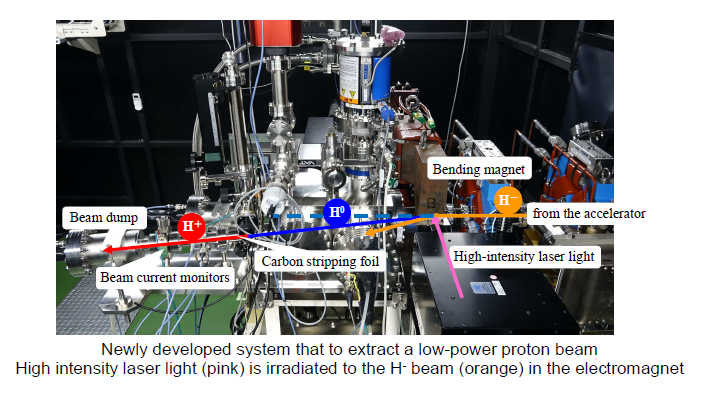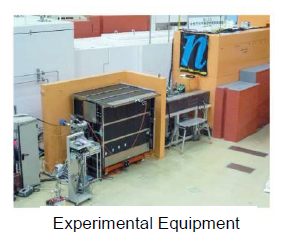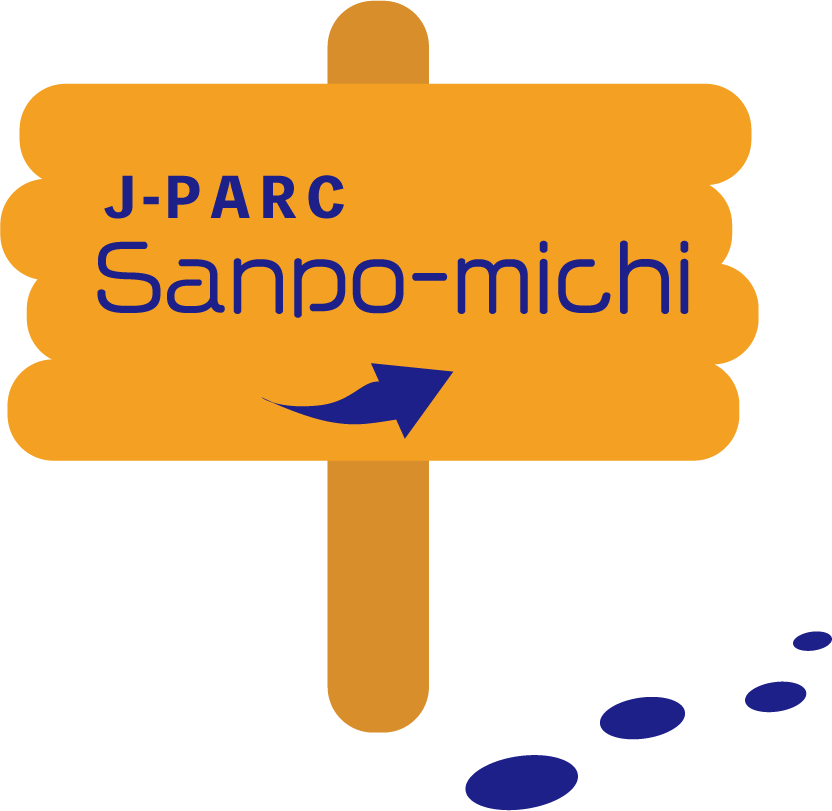J-PARC News January 2021 (Issue #189)
■ Message from Director of J-PAEC Center
Wishing all of you a Happy New Year!
Last year was a really unforgettable year for everyone around the world. During that time, thanks to the understanding and support of all concerned the J-PARC Center, we have been operating our facilities and accepting users in order to keep sharing opportunities for research and education while at the same time taking measures to avoid the spread of infectious disease. Due to the great support we have experienced, we were able to obtain greater results than ever before and share them with the world. I would like to express my deepest gratitude to all.
Although the end of the coronavirus pandemic remains unclear, we should not forget that many other big issues facing human society are ongoing. Among other things, as an example of global issues, we would like to contribute to mitigate climate change by the realization of the hydrogen society with unique characteristics of neutron beams and muon beams.
In ending this New Year's greeting, I would like to say that J-PARC will promise to always continue making the greatest efforts to respond to your expectations for the future of human society.
Naohito Saito, Director, J-PARC Center, New Year’s Day 2021
■ T2K Experiment Paper Selected for 10 Remarkable Discoveries from 2020 by Nature!
The paper published by the T2K Collaboration in the multidisciplinary science journal "Nature" in April 2020 was selected for Nature’s 10 remarkable discoveries from 2020. Results of the T2K experiment have indicated that there is a difference in the properties of neutrinos and antineutrinos (CP violation). In order to make more solid achievements in the future, the research group is aiming to accumulate more data. It is currently working on increasing the power of the J-PARC accelerators and constructing the Hyper-Kamiokande detector that is about 10 times larger fiducial volume than the Super-Kamiokande detector (SK).

■ Development of Proton Beam Control Technique for Transmutation Study using Accelerators -Succeed in Validation Test of Low-power Proton Beam Extraction Technique- (December 14, Press Release)
The J-PARC Center has been planning to build Transmutation Experimental Facility that conducts basic study on Accelerator-Driven nuclear transmutation Systems (ADS) to efficiently reduce the volume and toxicity of radioactive waste generated from nuclear power plants. Since the facility requires a low-power proton beam for transmutation characteristic testing as well as a high-power proton beam for target testing, J-PARC has developed a technology to extract a low-power proton beam from a high-power proton beam. The group of Dr. Hayanori Takei, JAEA Principal Researcher, and his colleagues at the J-PARC Center focused on laser charge exchange technology. In order to meet the demand for high stability in beam power, the group devised a technology for charge exchange of negative hydrogen ions (H-) by irradiating a laser beam while bending the trajectory of the H- beam with an electromagnet. Most of H- in the high-power beam are bent by the electromagnet and supplied to the target testing, while a small fraction of H- in the beam is converted to uncharged neutral hydrogens (H0) by the laser irradiation at the center of the electromagnet. The H0 beam moves straight and separates from the high-power H- beam. After that, the H0 are further converted into protons (H+) by a carbon stripping foil, and then extracted as a low-power beam, which is supplied to the transmutation characteristic testing. Devices such as an electromagnet and a laser light source were installed, and by using two types of lasers with different time structures, the group succeeded in stable extraction of a low-power H+ beam. This result is an important step for promoting research and development of ADS by utilizing J-PARC, and is expected to lead to the development of accelerator beam utilization technology.


■ New Experiment to Bring to Light Mystery of Neutron Lifetime Begins -Challenge to Solve The Neutron Lifetime Puzzle by the Third Method- (January 8, Press Release)
The neutrons that form the nucleus with protons are stable inside the nucleus, but once taken out of the nucleus, they decay into protons, electrons, and antineutrinos in less than 15 minutes. The exact value of the time (called lifetime) is essential for understanding the formation of the universe and elementary particle physics. There are two ways to determine the lifetime of neutrons: (1) Counting the number of particles formed by the decay of neutrons and (2) Counting the number of neutrons that remained without decaying. The measured values of neutron lifetime so far are shorter in (2) than (1) by about nine seconds, which is called the "the neutron lifetime puzzle". No factor has been found to explain the difference between the two results. Therefore, there may be another factor. It is assumed that not all decays were detected by method (1), suggesting that there may be a reaction in which neutrons decay into unknown particles such as dark matter. So, in order to verify the measurements of the lifetime by method (1) with another experiment, Kenji Mishima of J-PARC’s Neutron Science Section (Special Associate Professor, KEK) and his colleagues from J-PARC Center started a new experiment using a high-intensity pulsed neutron beam of beam line BL05 (NOP) at J-PARC's Materials and Life Science Experimental Facility (MLF). In the past, protons formed by the decay of neutrons were counted using the method (1), but the electrons formed by the decay were counted in this experiment. There were considerable background events in the experiment compared to counting protons, but the research group overcame it by devising a way to measure only the time corresponding to each pulse, and obtained the first experimental measurement. In the future, by accumulating more data and improving the accuracy, the neutron lifetime puzzle is expected to settle, which may lead to the discovery of unknown particles.


■ J-PARC Hello Science "Looking into Lithium Ion Battery using J-PARC Negative Muon" (December 25, Tokai Industry and Information Plaza "iVil")
At J-PARC Hello Science last December, Dr. Izumi Umegaki of Toyota Central R&D Labs., Inc. gave a lecture on lithium-ion battery research using a high-intensity negative muon beam in MLF. She explained features of lithium-ion batteries, the principle of elemental analysis using negative muons, and the results of nondestructive observation of metallic lithium deposition on electrodes of a battery. She showed that the research would further improve the safety of lithium-ion batteries, which are used in our everyday life, such as smartphones and automobiles, and contribute to the development of environmentally friendly reusable batteries.

■ J-PARC Center's Videos Added on the Official YouTube Channel of the Youngster’s Science Festival in Hitachi!
The 20th Youngster’s Science Festival in Hitachi last December was canceled due to the spread of coronavirus infections. Instead, the executive committee created a homepage by collecting links of science-related YouTube videos and held the festival online. The J-PARC Center has been continuously participating in this event by offering exhibits. This time, two videos were featured on the website.
 "Let's learn about precession by making a top that leans while spinning!" created by Mr. Haruki Shimizu and Mr. Kodai Ushizawa of The Graduate University for Advanced Studies, SOKENDAI and Mr. Yuga Nakazawa and Mr. Shingo Takahashi of Ibaraki University graduate students, who have been conducting research using the properties of elementary particles that are similar to those of spinning tops.
"Let's learn about precession by making a top that leans while spinning!" created by Mr. Haruki Shimizu and Mr. Kodai Ushizawa of The Graduate University for Advanced Studies, SOKENDAI and Mr. Yuga Nakazawa and Mr. Shingo Takahashi of Ibaraki University graduate students, who have been conducting research using the properties of elementary particles that are similar to those of spinning tops.

"Let's make a pendulum bell!" created by the J-PARC Center's Public Relations Section
Click here to view the video: http://saiten-hitachi.sakura.ne.jp/link0.html
 ■ Sanpo-michi # 6 -Sunrise on New Year’s Day in the Corona Turmoil-
■ Sanpo-michi # 6 -Sunrise on New Year’s Day in the Corona Turmoil-
Happy New Year.
 This is a photo of the sunrise seen from the Muramatsu Beach, adjacent to the property of J-PARC, on January 1st, 2021 at 6:49 am. An intense cold wave, that occurs once every few year, hit the Japanese archipelago during the year-end and New Year holidays. The temperature on New Year's Day reached -5.6 ℃at the Local Meteorological Observatory in Mito City.
This is a photo of the sunrise seen from the Muramatsu Beach, adjacent to the property of J-PARC, on January 1st, 2021 at 6:49 am. An intense cold wave, that occurs once every few year, hit the Japanese archipelago during the year-end and New Year holidays. The temperature on New Year's Day reached -5.6 ℃at the Local Meteorological Observatory in Mito City.
Since the sun gave off warm orange light in this photo, we couldn’t feel the cold. There was almost no wind long before the sunrise, and nearly 100 people waited quietly keeping a safe distance.
The sun finally appeared and illuminated the entire sea, and the light was divided into multiple layers by gentle waves.
At the J-PARC, three accelerators continued to operate, and the Materials and Life Science Experimental Facility and the Hadron Experimental Facility have started utilization research. We hope to accumulate research achievements and improve accelerator technology, and be a beacon of hope during the state of emergency due to the spread of corona virus.
